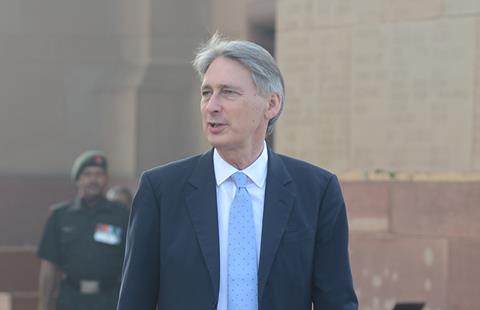
Autumn Statement 2016: Chancellor Philip Hammond (pictured) has announced that the money purchase annual allowance is set to be reduced to £4,000 from April 2017.
The money purchase annual allowance applies to those who have accessed their pension savings through the pension flexibilities and then make further defined contribution (DC) pension contributions. It is currently set at £10,000.
The reduction aims to limit the extent to which pension savings can be recycled to take advantage of tax relief, while still providing scope for individuals who need to access their savings to then rebuild them.
The government has launched a consultation into the changes, which will run until 15 February.
The consultation seeks views on whether respondents agree that the reduced rate would impact auto-enrolment or disproportionally impact certain groups.
Hammond said: “For pensions that have been drawn-down, I will also reduce to £4,000 the money purchase annual allowance, to prevent inappropriate double tax relief.”
Tom McPhail, head of retirement policy at Hargreaves Lansdown, said: “This means anyone contemplating drawing on their retirement savings needs to be very clear about their future retirement saving plans. Taking even £1 in excess of [their] tax-free lump sum, or using the uncrystallised funds pension lump sum rules in [their] 50s, for example, could leave savers with only very limited scope to make further pension saving in the future. In particular, it could deny them the benefit of future employer contributions.
“It is vital, therefore, that savers plan the drawing down of any pension savings with great care, checking what the future saving implications will be before tapping into their savings. The restriction is also likely to be retrospective, so anyone already caught by the money purchase annual allowance may have to adjust their pension saving plans in the future.”
Pete Glancy, head of industry development at Scottish Widows, said: “We must ensure that vulnerable customers who do not have access to professional financial support are protected. In particular, consideration needs to be given to those who have already taken some money from their pension and who would not expect a change of this nature to apply retrospectively. It is also likely that providers, advisers and public services will need to ensure that the new rules are understood by customers before they make at-retirement decisions.
“We would expect this reduction to £4,000 to have two effects. First, we would expect people to think twice before using uncrystallised funds pension lump sum to finance small treats in retirement such as a special holiday, because the longer-term consequences could now be more substantial.
"Second, we would also expect the average saver to leave their savings invested for longer, taking income at a later age because there is now less of an opportunity to make up any shortfall in their retirement plans.”











